Why do accomplished adults become frustrated beginners the moment they attempt new movement?
Note: This article is for educational and informational purposes only. See full disclaimer at the end.
A five-year-old learns to ride a bike by falling and laughing. A forty-five-year-old spends months perfecting a tennis serve — analyzing every angle, second-guessing every motion.
What changed? Not the body’s ability to move — adults retain extraordinary neuroplasticity. What changed is the psychology of learning.
Adults approach movement with intellect and inhibition, while children learn by doing. The result? Frustration, plateaus, and a quiet belief that our bodies have betrayed us.
But the truth is more empowering: by understanding the psychology of motor learning, adults can unlock capacities they never knew they had.
Why Adults Struggle to Learn New Physical Skills
Every day in gyms, studios, and playing fields around the world, intelligent, accomplished adults reduce themselves to frustrated beginners when attempting new movement skills. A surgeon who can perform microsurgery stumbles through a golf swing. A CEO who commands boardrooms freezes when learning to dance. An engineer who designs complex systems can’t coordinate a simple athletic movement.
This isn’t about physical decline—it’s about psychological interference. Research in motor learning reveals that adult motor skill acquisition is accompanied by significant neuroplastic changes, including alterations in brain structure, function, and neurochemistry [2]. The capacity for learning never diminishes. What changes is the mental environment in which learning occurs.
Children learn movement through what neuroscientists call “implicit learning”—their bodies discover patterns below the threshold of conscious awareness [3]. Adults, however, bring explicit cognitive processing to every new movement, creating what researchers describe as “analysis paralysis.” Research shows that procedural knowledge typically develops first and declarative knowledge develops later in effective learning approaches [3], yet adults typically attempt the reverse, trying to think their way into physical fluency.

The psychology of adult movement learning involves navigating three fundamental challenges: fear-based inhibition, self-consciousness interference, and the explicit-implicit learning tension. Master these psychological dynamics, and physical skill acquisition becomes not just possible, but predictable.
How Fear Blocks Movement Learning
Fear and motor learning exist in a complex relationship that most adults never consciously examine. When we attempt new movements, our nervous system activates threat-detection systems designed to protect us from injury. This creates what researchers call “movement anxiety”—a specific form of performance anxiety that directly impacts motor learning capacity [8].
Under anxiety, people sometimes perform poorly in perceptual-motor performance, with reductions in on-task attention affecting movement efficiency [8]. This isn’t just nervousness—it’s a neurobiological response that fundamentally alters how the brain processes movement information. When the amygdala perceives threat, it redirects neural resources away from the motor learning centers and toward survival processing [7].
The psychology of fear in movement manifests in three distinct patterns:
- Fear of Judgment: Adults learning physical skills often experience what psychologists term “social physique anxiety”—distress about others evaluating their physical appearance or competence [5]. This pattern intensifies in adulthood, where performance expectations compound social fears.
- Fear of Injury: Past physical trauma, real or perceived, creates protective patterns that limit movement exploration. The nervous system prioritizes safety over learning, resulting in movement restriction that prevents skill acquisition [11].
- Fear of Failure: Adults bring decades of achievement-oriented conditioning to movement learning. The prospect of visible failure activates shame responses that short-circuit the experimentation necessary for motor learning [6].
Understanding these fear patterns is the first step in creating psychological safety for movement learning. The brain that feels threatened cannot effectively encode new motor patterns.
Why Self-Consciousness Stops You From Moving Freely
Self-consciousness represents perhaps the most significant psychological barrier to adult movement learning. While children move with unselfconscious exploration, adults monitor every gesture, evaluating performance through filters of social comparison and self-criticism.

Research in social psychology reveals that individuals with social anxiety disorder are characterized by fear about social situations and important alterations in self-referential processing [5]. This principle extends to movement learning: excessive self-monitoring disrupts the implicit processing that drives skill acquisition.
The neuroscience of self-consciousness in movement reveals why this matters. When participants ran high above the ground (high-anxiety), their thoughts were strongly captured by their fear, suggesting that less task-relevant attention was available for efficient running [8]. Self-conscious attention creates a similar effect—mental resources that should process movement feedback instead monitor social evaluation.
This creates what movement scientists call “attention overflow.” The conscious mind, designed to handle approximately seven pieces of information simultaneously, becomes overwhelmed by self-monitoring processes. Movement execution, which requires rapid processing of multiple feedback streams, suffers accordingly.
The psychology of overcoming self-consciousness involves redirecting attention from internal monitoring to external task focus. Research consistently demonstrates that external attention focus (focusing on movement effects in the environment) produces superior learning outcomes compared to internal focus (monitoring body mechanics). This isn’t merely a technique—it’s a fundamental principle of how conscious attention interfaces with motor learning systems.
The Two Minds Behind Every Movement
The most profound insight from motor learning research is that adults possess two distinct learning systems that can either complement or conflict with each other. Understanding this dual-system architecture is essential for optimizing skill acquisition.
The Implicit System operates below conscious awareness, detecting movement patterns through repetition and environmental feedback. Skills acquired implicitly are more resilient to psychological and physiological stress, and more likely to be retained over time [11]. This system learns through trial and error, gradually refining movement efficiency without conscious intervention.
The Explicit System involves conscious analysis, verbal instruction processing, and deliberate movement modification. Explicit learning makes use of declarative knowledge to build up performance rules that guide motor execution [11]. Adults naturally default to this system, attempting to understand movement intellectually before executing physically.
The relationship between these systems determines learning success. Research reveals that explicit pre-training instruction does not improve implicit perceptual-motor sequence learning [3]. In fact, excessive explicit processing can interfere with implicit pattern recognition, creating what researchers call “paralysis by analysis.”
However, the systems can work synergistically when properly coordinated. The optimal approach involves using explicit knowledge to establish initial movement frameworks, then allowing implicit learning to refine execution through practice. This requires what motor learning researchers call “conscious incompetence tolerance”—the psychological capacity to perform imperfectly while the implicit system acquires skill.
Understanding these dual systems reveals why traditional approaches often fail—they ignore the neurobiological principles that govern how adults actually learn.
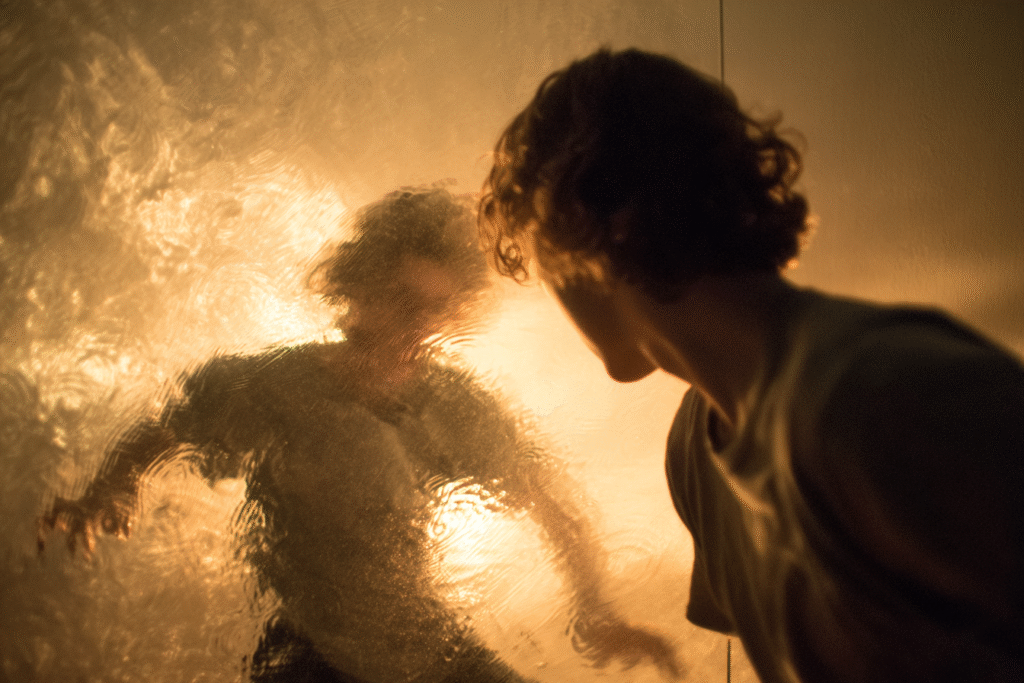
The Brain-Based Blueprint for Adult Skill Learning
Adult brains possess extraordinary capacity for motor learning, but this capacity operates according to specific neurobiological principles. Understanding these principles provides a framework for psychological skill development that works with, rather than against, neural learning processes.
Recent years have seen significant progress in understanding the neural substrates of motor skill learning, with advances in neuroimaging providing new insight into functional reorganization associated with acquisition, consolidation, and retention [1]. The brain’s capacity for change remains robust throughout life, but the conditions that promote plasticity must be intentionally created.
Neuroplasticity Principle 1: Challenge Calibration The brain adapts to demands placed upon it, but the challenge level must be precisely calibrated. Too easy, and no adaptation occurs. Too difficult, and stress responses interfere with learning [7]. The optimal challenge zone—what researchers call the “edge of competence”—exists where success is possible but not guaranteed.
Neuroplasticity Principle 2: Attention Architecture Passive or overly guided movement practice does not lead to changes in motor behavior or neuroplasticity [10]. The brain requires active, engaged attention to encode new motor patterns. This attention must be directed appropriately—toward task-relevant environmental information rather than internal self-monitoring.
Neuroplasticity Principle 3: Variability Requirement Motor learning occurs through exploration of movement variability. The brain maps the relationship between motor commands and environmental outcomes, requiring diverse practice conditions to build robust skill [1]. Repetition without variation creates brittle learning that breaks down under pressure.
Neuroplasticity Principle 4: Consolidation Time Motor memories require time to consolidate from temporary working memory into stable long-term storage. Plastic changes involving structural reorganization in gray and white matter architecture occur over shorter time periods than previously thought [1]. However, consolidation still requires both sleep and time between practice sessions.
EMBODY: A Framework for Unlocking Adult Physical Skill
Building on neuroscience research and psychological principles, the EMBODY framework provides a systematic approach to adult movement learning that addresses the unique challenges of explicit-implicit integration.
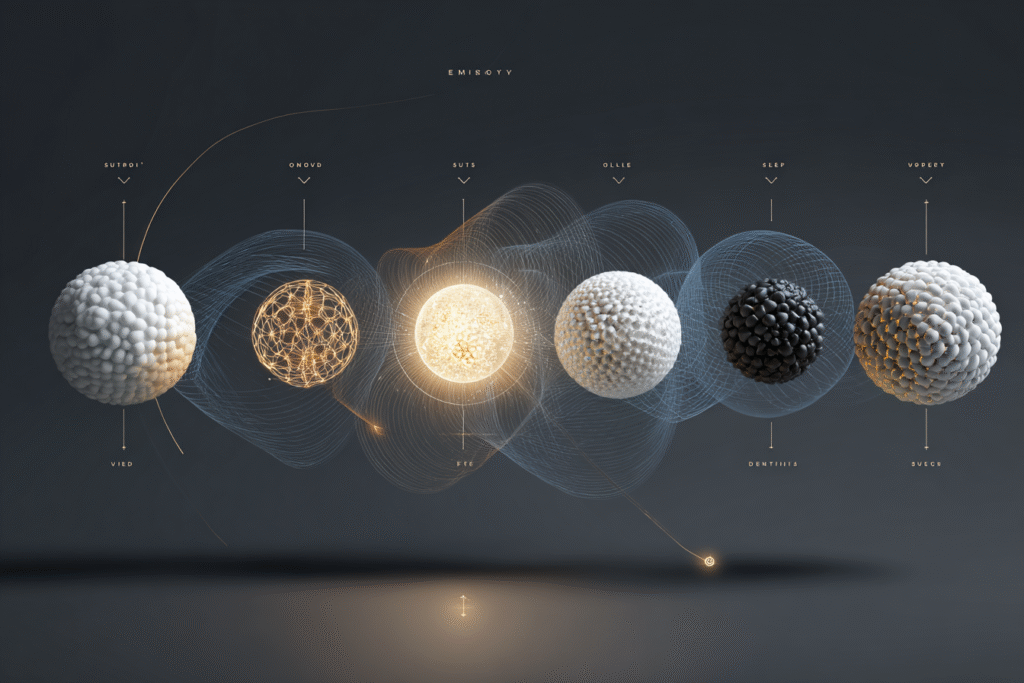
E – Establish Safety
Learning only happens when the nervous system feels secure enough to explore.
Before any movement learning can occur, the nervous system must perceive the learning environment as safe. This involves both physical safety (appropriate progression, injury prevention) and psychological safety (non-judgmental atmosphere, failure tolerance).
Create psychological safety through:
- Reframing mistakes as essential data collection
- Establishing private practice spaces free from evaluation
- Using process-focused rather than outcome-focused feedback
- Acknowledging that awkwardness is temporary and normal
M – Minimize Self-Monitoring
Too much inward focus blocks the flow of physical learning.
Redirect attention away from internal body awareness toward external task objectives. Research consistently demonstrates that external focus produces superior learning outcomes while reducing self-conscious interference [10].
Attention redirection techniques:
- Focus on movement effects rather than movement mechanics
- Use environmental targets rather than body position cues
- Practice in conditions that naturally draw attention outward
- Develop comfort with imperfect execution during learning phases
B – Build Implicit Learning Conditions
Skill emerges most powerfully when the body learns before the brain explains.
Create practice environments that allow the implicit learning system to operate effectively. This requires reducing explicit cognitive interference while maintaining appropriate challenge levels [11].
Optimal conditions include:
- Variable practice scenarios that prevent conscious pattern analysis
- Time pressure that reduces opportunity for explicit monitoring
- Game-like conditions that engage natural movement responses
- Progressive complexity that stays within the flow state zone

O – Optimize Attention Direction
Where you place your focus determines what your brain encodes.
Conscious attention represents a limited resource that must be strategically allocated during movement learning [9]. Understanding how to direct attention optimally accelerates acquisition while preventing information overload.
Key strategies:
- Single-point focus rather than multi-element monitoring
- Environmental feedback integration over internal sensation tracking
- Outcome awareness over process micromanagement
- Present-moment engagement rather than future/past orientation
D – Develop Embodied Awareness
Noticing without overthinking is the key to movement mastery.
While minimizing self-consciousness, develop sophisticated awareness of how movement feels from the inside. This involves cultivating what researchers call “interoceptive precision”—accurate internal body awareness without excessive self-monitoring [6].
Development approaches:
- Practice distinguishing between tension and effort
- Develop sensitivity to movement efficiency indicators
- Cultivate awareness of emotional responses to movement
- Build capacity to sense rather than analyze movement quality
Y – Yield to the Process
Progress in adult movement requires trust, patience, and letting go of perfection.
Adult movement learning requires psychological surrender to the uncertainty and non-linearity of skill acquisition [2]. This involves releasing perfectionist expectations and trusting the learning process even when progress seems invisible.
Process acceptance involves:
- Accepting temporary decreases in performance during skill transitions
- Maintaining practice consistency despite apparent plateaus
- Celebrating process engagement over performance outcomes
- Developing tolerance for not knowing how movements work
While the EMBODY framework provides the methodology, understanding the psychological journey helps set realistic expectations and maintain motivation through each phase.
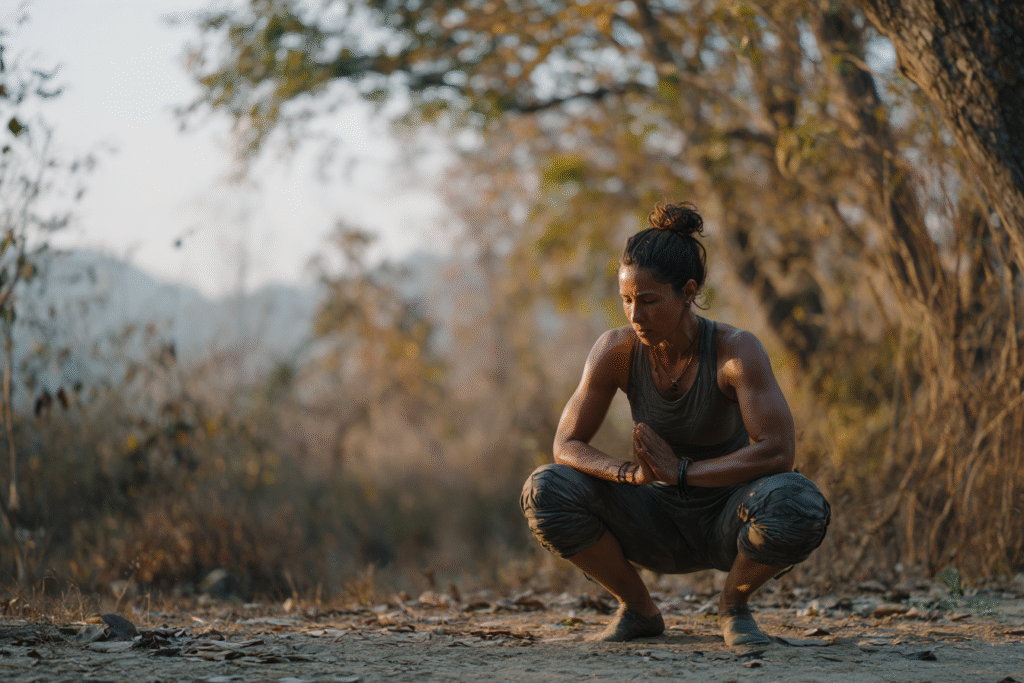
The 4 Psychological Phases of Skill Mastery
Understanding movement learning psychology reveals a predictable journey that every adult navigates when acquiring new physical skills. This journey unfolds in stages, each presenting unique psychological challenges and opportunities. Rather than viewing these stages as obstacles, recognizing them as natural progressions transforms frustration into understanding and patience into progress.
Consider the story that plays out in every gym, dance studio, and sports facility worldwide: the accomplished professional who approaches movement learning with the same analytical mindset that brought success in their career, only to discover that physical skill acquisition operates by entirely different rules. This collision between intellectual competence and physical novice status creates a psychological crisis that either derails learning or becomes the catalyst for profound growth.
Stage 1: The Cognitive Storm (Weeks 1-4)
Initial movement learning activates multiple systems simultaneously: visual processing, motor planning, balance adjustment, attention allocation, and social monitoring [1]. Adults often experience this as mental fatigue that seems disproportionate to the physical demands. The brain, accustomed to operating efficiently in familiar domains, suddenly finds itself overwhelmed by the complexity of coordinating new movement patterns.
During this stage, adults typically make the mistake of treating movement learning like academic learning—seeking to understand before experiencing, analyzing before embodying. The psychological experience feels like trying to conduct an orchestra while learning to read music, all while being watched by an audience. Every movement feels clumsy, every mistake feels magnified, and the gap between intention and execution seems insurmountable.
Yet beneath this surface chaos, profound learning is occurring. The nervous system is rapidly cataloging movement possibilities, building the foundation for future skill development. Research shows that even seemingly unsuccessful practice sessions during this phase contribute essential information to the implicit learning system [11]. The key psychological shift involves reframing confusion as progress rather than failure.
Stage 2: The Pattern Recognition Emergence (Weeks 4-12)
Something remarkable happens around the fourth week of consistent practice: the implicit learning system begins recognizing movement patterns below conscious awareness. Adults often experience this as sudden improvement episodes followed by temporary regression—a normal part of motor learning consolidation that can be psychologically destabilizing for those unprepared for its non-linear nature.
This stage presents a unique psychological challenge. Just as adults begin feeling competent, performance becomes inconsistent. Good days are followed by terrible days, leading many to question whether they’re actually improving. The temptation to over-analyze successful movements becomes overwhelming, yet research demonstrates that explicit analysis during this phase can actually interfere with the pattern recognition process [3].
The psychological work of this stage involves developing tolerance for uncertainty and inconsistency. Like a photographer learning to trust the development process even when the image isn’t yet visible, adults must learn to trust their nervous system’s capacity to organize movement patterns without conscious intervention. This requires a fundamental shift from the control-oriented mindset that characterizes adult professional life to the trust-oriented mindset that enables optimal learning.
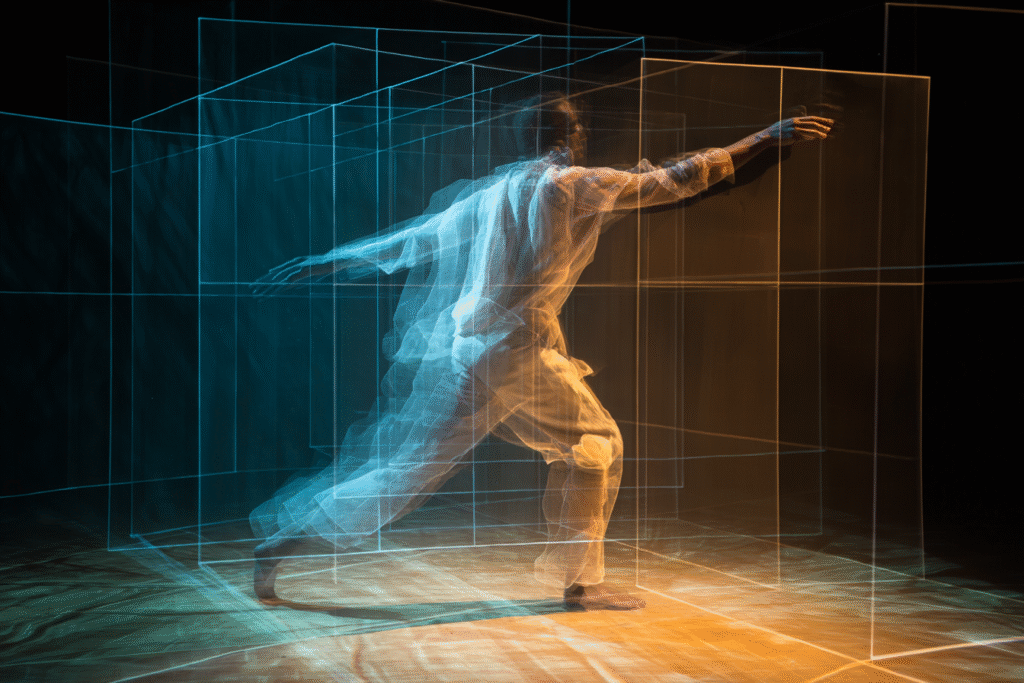
Stage 3: Integration Under Pressure (Weeks 12-26)
Movement patterns become more stable during this phase, but integration with environmental demands and pressure situations remains inconsistent. This stage often involves the most significant psychological resistance as old movement habits compete with emerging skills [2]. Adults experience identity conflicts between their established self-concept and their emerging movement capabilities.
The psychology of this stage centers around what researchers call “pressure testing”—the nervous system’s need to verify that new movement patterns can function under stress. Adults often interpret regression under pressure as evidence that they haven’t really learned the skill, when in fact this represents a normal part of skill consolidation. The challenge involves maintaining confidence in emerging abilities while accepting temporary performance decreases under challenging conditions.
This phase requires developing what might be called “integration patience”—the psychological capacity to allow new and old movement patterns to coexist while the nervous system determines optimal solutions. Fighting this process through forced consistency typically prolongs the integration period, while accepting the temporary coexistence of multiple movement strategies accelerates progress toward mastery.
Stage 4: Embodied Confidence (Months 6-18)
Movement skills become sufficiently automated to allow attention to shift toward environmental application and creative expression. Psychological confidence in movement capability emerges, reducing fear-based restrictions and opening possibilities for advanced development [4]. This stage marks the transition from skill acquisition to skill application.
The psychological transformation during this phase extends far beyond the specific movement being learned. Adults discover that their capacity for learning new physical skills was never lost, only dormant. This realization often catalyzes exploration of other movement challenges, creating a positive feedback loop of confidence and capability building.
Yet this stage presents its own psychological trap: the temptation to coast on newly acquired competence rather than continuing to challenge the edges of capability. Research in expertise development shows that continued growth requires deliberate practice at the boundaries of current skill level [10]. The psychological work involves maintaining beginner’s mind despite intermediate competence, continuing to seek challenge rather than settling for comfort.
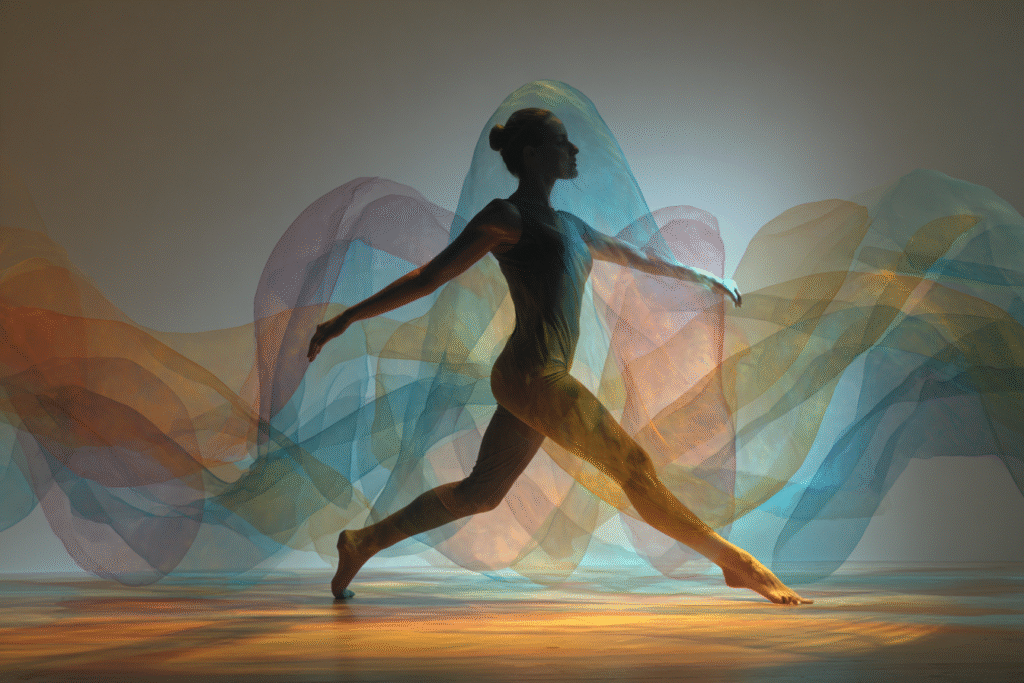
What Creates Breakthroughs in Physical Learning
Within the predictable stages of adult motor learning lie unpredictable moments of breakthrough—sudden leaps in understanding or capability that can’t be explained by incremental practice alone. Understanding the psychology of these moments helps create conditions that make them more likely to occur.
Breakthrough moments in movement learning often occur when the conscious mind temporarily disengages from monitoring and control. Athletes describe being “in the zone,” dancers speak of “finding the flow,” and martial artists refer to “mushin”—a state of no-mind where movement happens without conscious intervention. These states share common psychological characteristics:
- Present-moment awareness without future/past orientation
- Reduced self-consciousness and social monitoring
- Trust in the body’s innate intelligence and capability
- Integration of attention, motor, and sensory systems [4]
Research in embodied cognition reveals that these breakthrough states involve integration of multiple neural networks that typically operate independently [4]. The default mode network, which governs self-referential thinking, temporarily quiets while motor, sensory, and attention networks achieve synchronized activation [5]. This integration creates conditions for learning leaps that seem impossible from the perspective of incremental skill building.
Creating psychological conditions that support breakthrough moments becomes an advanced skill in itself. This involves developing comfort with not knowing, tolerance for temporary disorientation, and trust in processes that operate beyond conscious understanding. Adults who master this psychological flexibility often find that movement learning becomes a gateway to broader life transformation.
Creating conditions for breakthrough moments requires intentional environmental design that supports rather than hinders psychological flow states.
How Environment Shapes Skill Acquisition
The environments in which movement learning occurs profoundly influence psychological comfort and learning efficiency. Understanding environmental psychology helps create optimal conditions for adult skill acquisition while avoiding the common mistake of practicing in environments that inadvertently trigger defensive responses.
Physical environments that support learning psychology share certain characteristics: they feel safe enough to permit experimentation, private enough to reduce social anxiety, and challenging enough to maintain engagement without overwhelming capacity [7]. The most sophisticated movement instruction cannot overcome psychological resistance created by inappropriate learning environments.
Optimal learning environments include:
- Adequate space for movement exploration without collision risk
- Visual privacy that reduces social evaluation anxiety
- Equipment and surfaces that feel safe and supportive
- Lighting and acoustics that support attention focus
Social environments prove equally important. Adults learn best in contexts that feel supportive rather than evaluative, where others are engaged in similar learning challenges rather than demonstrating superior competence [6]. The presence of encouraging peers can dramatically accelerate learning, while competitive or judgmental atmospheres often trigger protective responses that inhibit skill acquisition.
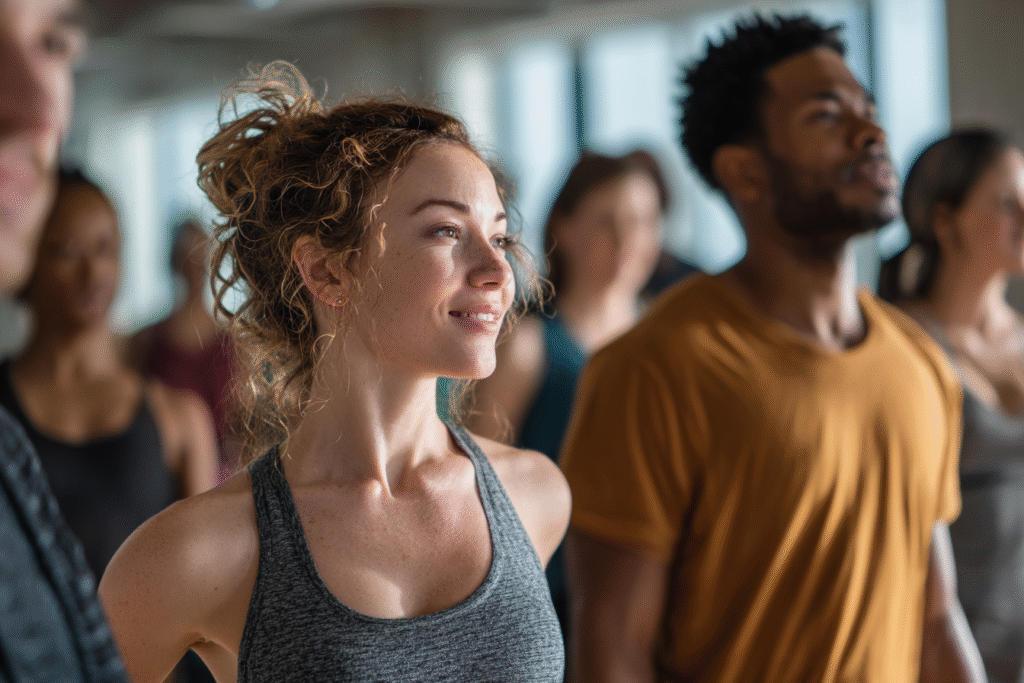
Perhaps most importantly, the temporal environment—the pacing and rhythm of learning sessions—must accommodate the cognitive demands of adult motor learning. Research shows that adults benefit from session structures that prevent cognitive fatigue while allowing sufficient time for pattern recognition to emerge [10]. Rushing this process typically prolongs learning duration, while patient pacing accelerates skill acquisition.
Confidence vs. Competence: The Feedback That Builds Skill
Movement confidence and movement competence exist in a complex feedback relationship that determines long-term learning success. Understanding this relationship helps adults navigate the psychological challenges of skill development while building sustainable motivation for continued growth.
Confidence without competence leads to injury and frustration. Competence without confidence prevents skill application and advancement. The optimal relationship involves confidence that slightly leads competence—enough belief to attempt challenging movements, but not so much as to ignore skill limitations. This requires sophisticated psychological calibration that most adults must consciously develop.
Building this calibration involves learning to distinguish between appropriate challenge and inappropriate risk, between productive discomfort and destructive stress. Adults who successfully navigate this distinction often discover that movement learning becomes a laboratory for developing psychological skills that enhance all areas of life: resilience, adaptability, trust, and the capacity to remain calm under pressure [12].
The neuroscience of movement confidence reveals that it emerges through specific pathways that can be systematically developed:
- Prediction Accuracy: Building the brain’s ability to forecast movement outcomes through varied practice
- Error Tolerance: Recalibrating hypersensitive error-detection systems to distinguish meaningful feedback from normal learning variation
- Threat Assessment: Learning to distinguish between actual risk and perceived danger in movement challenges
Each of these pathways can be systematically developed through appropriate practice approaches, transforming movement learning from a source of anxiety into a source of empowerment [12].
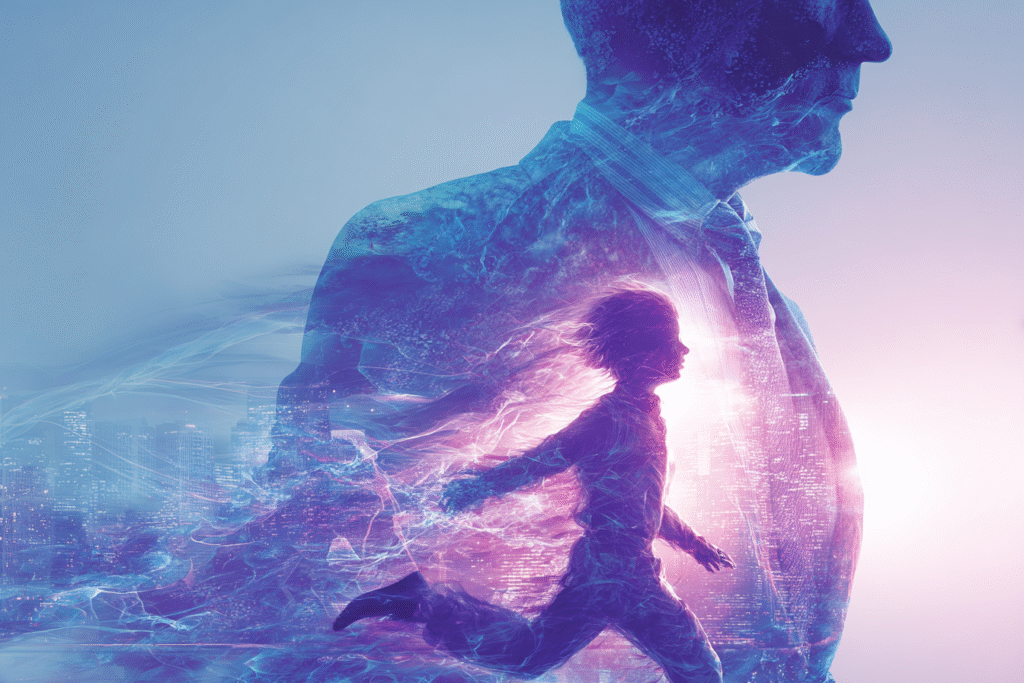
Movement Learning as a Mirror for Life Mastery
The psychology of movement learning offers profound insights for adult development beyond physical skill acquisition. The same mental approaches that enable effective movement learning—present-moment awareness, tolerance for uncertainty, trust in natural learning processes—enhance performance in professional, creative, and relational contexts.
Adults who master movement learning psychology often report increased confidence in approaching other learning challenges. The embodied experience of transforming from incompetence to competence provides visceral proof of learning capacity that purely intellectual achievements cannot match. This creates what researchers call “transfer effects”—psychological skills developed in movement contexts that enhance performance in seemingly unrelated domains.
Perhaps most significantly, movement learning provides a direct pathway to embodied confidence—trust in the body’s intelligence and capability that extends far beyond specific skills. This embodied confidence becomes a resource for navigating life challenges with greater resilience, creativity, and effectiveness.
The journey from movement novice to movement master mirrors the broader journey of adult development: learning to trust process over outcome, embracing uncertainty as opportunity, and discovering capacities that seemed impossible from the perspective of limitation. When approached with appropriate psychological understanding, movement learning becomes a gateway to discovering what you’re truly capable of becoming.
See you in the next insight.
Comprehensive Medical Disclaimer: The insights, frameworks, and recommendations shared in this article are for educational and informational purposes only. They represent a synthesis of research, technology applications, and personal optimization strategies, not medical advice. Individual health needs vary significantly, and what works for one person may not be appropriate for another. Always consult with qualified healthcare professionals before making any significant changes to your lifestyle, nutrition, exercise routine, supplement regimen, or medical treatments. This content does not replace professional medical diagnosis, treatment, or care. If you have specific health concerns or conditions, seek guidance from licensed healthcare practitioners familiar with your individual circumstances.
References
The references below are organized by study type. Peer-reviewed research provides the primary evidence base, while systematic reviews synthesize findings across multiple studies for broader perspective.
Peer-Reviewed/Academic Sources
- [1] Dayan, E., & Cohen, L. G. (2011). Neuroplasticity subserving motor skill learning. Neuron, 72(3), 443-454. https://pmc.ncbi.nlm.nih.gov/articles/PMC3217208/
- [2] Gooijers, J., Pauwels, L., Hehl, M., Seer, C., Cuypers, K., & Swinnen, S. P. (2024). Aging, brain plasticity, and motor learning. Ageing Research Reviews, 102, 102569. https://pubmed.ncbi.nlm.nih.gov/39486523/
- [3] Andrieux, M., & Proteau, L. (2013). Explicit pre-training instruction does not improve implicit perceptual-motor sequence learning. Cognition, 126(3), 341-351. https://www.sciencedirect.com/science/article/abs/pii/S0010027712002570
- [4] Wilson, M. (2002). Six views of embodied cognition. Psychonomic Bulletin & Review, 9(4), 625-636. https://plato.stanford.edu/entries/embodied-cognition/
Government/Institutional Sources
- [5] National Institute of Mental Health. (2023). Social anxiety disorder: What you need to know. https://www.nimh.nih.gov/health/publications/social-anxiety-disorder-more-than-just-shyness
- [6] Kennedy Krieger Institute. (2023). Anxiety and its impact on learning. https://www.kennedykrieger.org/stories/making-difference/inspiring-stories/anxiety-and-its-impact-learning
Industry/Technology Sources
- [7] Stein, D. J., & Naudé, P. J. (2015). Social anxiety disorder and the psychobiology of self-consciousness. CNS Spectrums, 20(4), 368-374. https://pmc.ncbi.nlm.nih.gov/articles/PMC4585074/
- [8] Cox, R. W., Roesch, E. B., & Keil, A. (2012). Anxiety and perceptual-motor performance: toward an integrated model of concepts, mechanisms, and processes. Frontiers in Psychology, 3, 452. https://pmc.ncbi.nlm.nih.gov/articles/PMC3470682/
- [9] Leech, K. A., Roemmich, R. T., Gordon, J., Reisman, D. S., & Cherry-Allen, K. M. (2022). Updates in motor learning: implications for physical therapist practice and education. Physical Therapy, 102(1), pzab250. https://www.ncbi.nlm.nih.gov/pmc/articles/PMC8793168/
- [10] Koedijk, M., Rietjens, G. J., & Kemps, E. (2019). The role of working memory capacity in implicit and explicit sequence learning of children: Differentiating movement speed and accuracy. Human Movement Science, 68, 102533. https://www.sciencedirect.com/science/article/abs/pii/S0167945719301332
- [11] Cañal-Bruland, R., & van der Meer, B. R. (2023). From fear of falling to choking under pressure: A predictive processing perspective of disrupted motor control under anxiety. Neuroscience & Biobehavioral Reviews, 148, 105116. https://www.sciencedirect.com/science/article/pii/S0149763423000842
- [12] Martin, P., Schroeder, R., & Belardinelli, A. (2024). The neural correlates of embodied L2 learning: Does embodied L2 verb learning affect representation and retention? Neurobiology of Language, 5(2), 360-389. https://direct.mit.edu/nol/article/5/2/360/118965/


